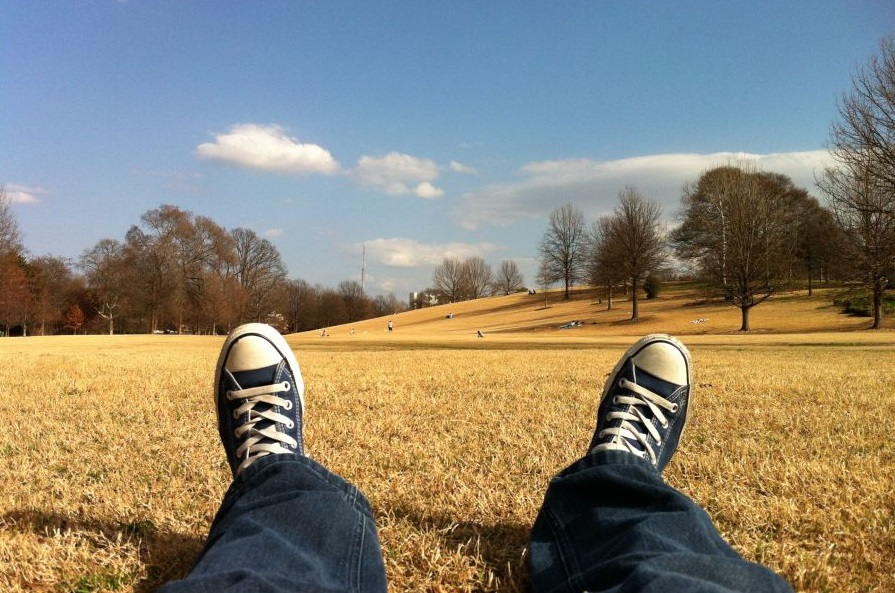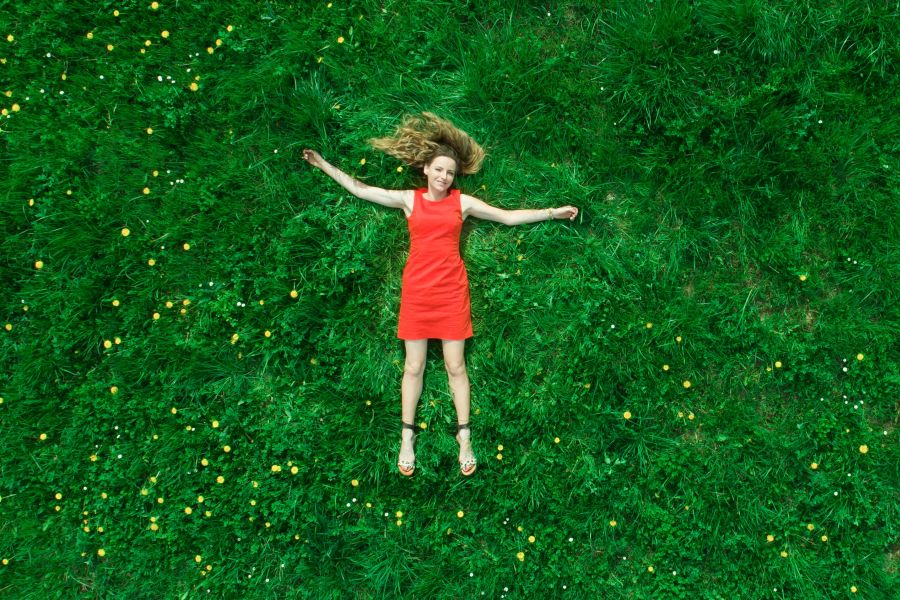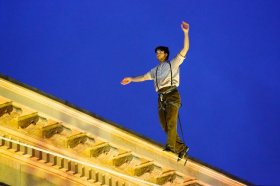In the art world, Salvador Dalí was famous for it. Albert Einstein and Thomas Edison were also ardent devotees. Closer to home, Australian playwright Hannie Rayson has a similar way of getting through her creative blocks.
It may appear to be a tightly kept secret, but it requires no special training or expert knowledge. Rather, it’s a technique that can be undertaken by anyone in need of a creative boost who has a few minutes up their sleeve and a hard, flat surface within reach.
If you haven’t already guessed, this mind-altering method is among the most natural moves we do in a day – and it’s all about lying down.
Logic of lying down for neurological nirvana
While there are various somatic practices utilising the powers of the body at rest, one of the most well-known and widely used – especially within performing arts circles – is the Feldenkrais Method.
Moshé Feldenkrais (1904 – 1984) was a Ukrainian-Israeli engineer who, after practising ju jitsu and judo in Europe in the 1930s, developed techniques to harness body-mind connections in order to improve mobility and muscular function.
Designed largely around self-awareness and tuning in to one’s body to re-educate patterns of movement, the technique is done lying down to reduce gravity’s influence and free the nervous system from what could be unhelpful accumulated habits.
Perth-based Feldenkrais practitioner Molly Tipping (also a trained dancer) has been applying these concepts for the past decade to assist a range of artists ease physical injuries or unlock new energy flows to enhance their creative rhythms.
Tipping says the process of lying down on a hard, flat surface for up to 20 minutes is an effective way to shift the nervous system to a state where both body and mind can break free from what could be unhelpful repetitious cycles.
‘In the upright position, we are habituated in our personalities, and habituated in the way we are engaged in the world,’ she says. ‘We are in our social identities, embodying the identities we present to others.
‘But when we lie down, all of that falls away. We surrender to gravity and we give up those habituated patterns and enter a state where our mind and muscles are in more of a blank slate space.’
Read: Why rest is good for you and your creativity
Tipping adds that this rest state is an important place for the mind to expand and re-energise, just as long as it’s not endured for much longer than 20 minutes, otherwise the body falls into deep sleep.
‘If you fall asleep within that initial time-frame, that’s fine,’ she explains. ‘But if you lie down for any longer, you’ll enter REM sleep. So, resting past 20 minutes can make people feel groggy – although some prefer the extended rest, so trust what suits your nervous system and body.’
Whether you fall asleep or not, the process of being in the horizontal position for a short time can be an important aid to sustaining productivity and mental strength over the course of your day.
‘In our culture, people tend to perceive taking a break as slacking off. But rest is essential to eliminate overworking the mind, Tipping says.
‘Rest is not an absence,’ she continues. ‘It’s a vital way for our minds to consolidate and make sense of what we’ve been doing.’
Recently, the lying down trend has been adopted in the classical music and elite sports sectors, where taking intentional lying down breaks is helping musicians and athletes to maintain high performance levels.
‘They literally do nothing but lie down to shift those locked-in body and mind patterns they move through in their more habitual states of being – like playing their instruments,’ Tipping says.
Understanding your creative energetic states
While anyone can benefit from a short burst of lying down, the technique can be especially helpful for artists to help balance certain creative states of mind.
Tipping describes a particular creative zone often aligned with high creative output that benefits from the counterweight effects of short bursts of motionless rest.
‘That high-octane creative state could feel a bit obsessive-compulsive,’ she explains. ‘It’s where we get hyper-fixated on a particular idea or ideas, and we just go for it, and we pursue those ideas with a great deal of focus.
‘Some artists love that state because it helps them meet deadlines and get things done,’ she continues. ‘But it doesn’t allow for wide associations or abstract, unexpected connections to new ideas to occur.
‘The lying down state can help artists re-enter those zones where greater creative breadth and depth can be achieved.’

For visual artist Tarryn Gill, who originally came to Feldenkrais as a way to manage chronic pain, this technique has opened new ways of approaching her arts practice.
She explains: ‘In art-making, you regularly need to sit with the discomfort of not knowing how to resolve something or whether ideas will even come to you at all.
‘Feldenkrais lessons have helped me because they offer a regular practice of sitting with that same discomfort or frustration. It encourages you to be OK with not knowing and to curiously, playfully find your way through, and possibly find yourself in a beautiful flow state.’
Performer and choreographer Laura Boynes is another artist who uses Feldenkrais as part of her creative process.
‘It’s a counselling session for the body,’ she says. ‘It gives me a moment to slow down and process life internally and externally. It is like a full body dreaming, where muscle memories flood back in and I find space for personal and creative reflection.’
Read: 50 ways to take care of yourself in the arts
Tipping suggests that, as well as guiding artists’ creative rhythms, short lying down breaks can help curb the kind of energy burnouts many in the sector are grappling with after their intense pandemic experiences.
‘It’s a simple practice that can also reduce the risk of burnout – absolutely,’ she says.
‘When you are feeling mentally stuck and as if your brain is not moving or it’s on a loop, step away and ideally lie down. If you’ve only got five minutes to do that, take five minutes. If you’ve got more time, take longer.
‘The important thing is that you allow your body and mind to leave that ‘stuck’ place and return to a state where your thoughts can flow more freely – and that’s what lying down can help you do,’ she concludes.





